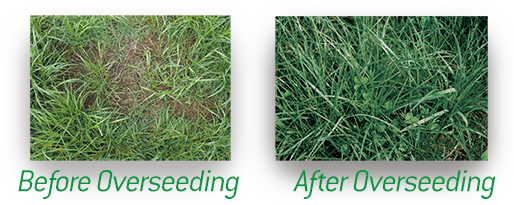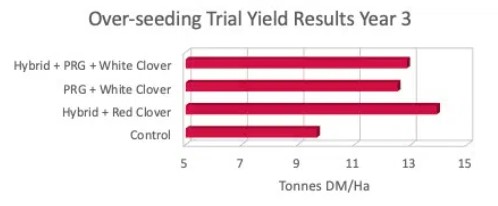Boost your sward the environmentally friendly way!
Overseeding presents a real opportunity to restore production in tired or damaged swards. It is also a way to get a rebound in forage yield in a low-cost, energy saving and climate-friendly way. The drilling technique saves money for expensive fuel and the loss of CO2 from the seed bed preparation is limited to a minimum.
When the sward becomes open allowing weeds and unsown species to invade, overseeding will help to restore and maintain productivity by increasing both yield and quality. The loss of 1 tonne DM/ha @ 11MJ/ kg DM equates to 11000 MJ. This is the difference between success and failure in forage production!

No matter how good the grassland management is, there will be a decline in output and an increase in weed species present over time. From year one a yield decrease of 8-10% is normal, which unfortunately is also associated with a decline in forage quality. Without any doubt sward renewal is a golden option. In many cases however, it is not practical nor economical to establish swards with a full reseed. Instead, an overseeding can successfully improve both yield and quality of the grassland at 25% of the normal cost.

What yield improvements can be achieved?
Overseeding increases not only forage yields but also the forage quality. Such improvement translates into increased milk- and meat yields without extra need for expensive, imported feed.
Advantages of overseeding grassland are:
-
Increased production and extended grazing season
-
Improved animal performance, profitability and digestibility
-
Depression of non-productive grasses and broad-leaved weeds
-
Introduction of newer improved varieties and better disease resistance
-
The inclusion of clover will improve protein content, and potentially save on purchased nitrogen
Read more about yield improvements and top tips for overseeding in the latest Insiders Turf & Forage article in European Seed
Learn more about overseeding methods video below
